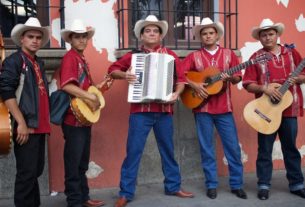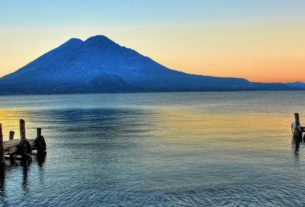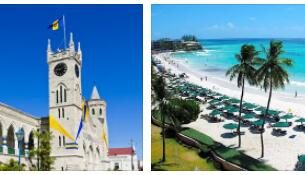The Constitution is in force in 1976, as amended in 1992. According to the Constitution, “Cuba is a socialist, independent and sovereign state of workers, created by all and for the good of all in the form of a unitary democratic republic that provides conditions for political freedom, social justice, individual and collective prosperity and human solidarity”. Check diseaseslearning for political system of Cuba.
Administrative division: 14 provinces (Pi nar del Rio, Havana City, Havana, Matanzas, Cien Fuegos, Villa Clara, Sancti Spiritus, Ciego de Avila, Camaguey, Las Tunas, Granma, Santiago de -Cuba, Holguin and Guantanamo), which are divided into 169 municipalities, including one special central subordination (Island of Youth).
The largest cities (thousand people, end of 1998): Havana (2192), Santiago de Cuba (440), Camaguey (304), Holguin (256), Santa Clara (210), Guantanamo (207).
The highest body of legislative power is the unicameral National Assembly of People’s Power, whose deputies (609 people) are elected by universal, direct, secret suffrage. The term of office of Parliament is 5 years.
From among its deputies, the National Assembly elects the State Council (31 people), consisting of the chairman, the first deputy chairman, 5 vice-chairmen, the secretary and 23 members. The State Council is a permanent body of the National Assembly, which represents it between sessions, implements its decisions and reports to it on its activities. The term of office of the Council of State expires at the conclusion of the election of a new assembly. The Chairman of the State Council is both the head of government and the supreme commander of the Armed Forces of the Republic.
The highest executive body is the Council of Ministers (Government), whose members are nominated by the Chairman of the State Council and approved by the National Assembly. The Council of Ministers is accountable for its activities to the National Assembly of People’s Power.
Local governments are represented by provincial and municipal assemblies. The term of office of the first is 5 years, the second is 2.5 years. Like the National Assembly, locals are elected through equal, direct and secret elections. The right to be elected to the provincial and municipal assemblies, as well as the bodies formed by them, have citizens who have reached the age of 16. The age limit for deputies of the National Assembly is 18 years.
Castro was the prime minister of Cuba from February 17, 1959 until February 24, 1976, when this post was legally abolished. Since December 2, 1976, Castro has been chairman of the Council of State and the Council of Ministers of Cuba.
The only legal political party is the Cuban Communist Party (CPC), founded on April 16, 1961, which has complete control over the legislative, executive, and judicial powers and mass public organizations. The leading role of the CCP is enshrined in the Constitution of the Republic. The highest body of the party is the congress, convened once every 5 years, which is elected by the Central Committee. The last of its members elects the Politburo (25 people). The first secretary of the Central Committee of the Communist Party of Cuba is F. Castro, the second is R. Castro. By the Fifth Congress of the CPC (1997), the party had 780,000 members.
The most massive public organization is the Committees for the Defense of the Revolution (KZR), created in 1960 and uniting St. 6.6 million people National Coordinator of the KZR – J. Contino.
The Trade Union Center of the Workers of Cuba (PTK) was founded in 1939. It unites 19 sectoral trade unions with 2.7 million members (1996). Secretary General – P. Ross Leal.
The Federation of Cuban Women (FCW) was founded in 1960 and includes 3.6 million people. (82.7% of the total female population over 14, 2000). Chairman of the FCL – V. Espin de Castro.
The National Association of Small Farmers (NAMZ) was founded in 1961 and has approx. 170 thousand members. Chairman of NAMZ – O. Lugo. There are also a number of other public organizations.
The leading business organization is the Chamber of Commerce of the Republic of Cuba.
In foreign policy, Cuba stands for international relations and friendly relations with all states based on strict respect for equality, sovereignty, independence and national and territorial integrity. It is committed to the ideas of strengthening the role of the UN, the principles of a multipolar world and international security.
Most countries in the world maintain normal interstate relations with Cuba and are in favor of lifting the US trade embargo. Cuba’s economic and trade relations with Canada, the EU (especially with Spain) and Latin American countries (in particular, with Venezuela) are successfully developing.
On horseback 2002 Cuba maintained diplomatic and consular relations with 182 states.
The number of Cuban Armed Forces has decreased from 297 thousand people. in 1987 to 55 thousand in 1997. The share of military spending in GDP has declined during this time from 4.5 to 2.3%. In 2002, there were 1,915.6 thousand men fit for military service (persons aged 15–49), and 1,869.9 thousand women.
Diplomatic relations with the USSR were established on October 14, 1942, interrupted on April 3, 1952, and restored on May 8, 1960. In December 1991, the Russian Federation was recognized as the legal successor of the USSR.



